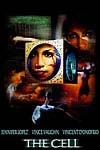| |

THE
CELL WARNS JUDGES TO SEND ABUSED CHILDREN TO FOSTER PARENTS
 A
plot involving the pursuit of a serial killer is not uncommon
among the many suspense movies for those who like to bite
their nails when they run out of popcorn. This year’s best
addition to the genre so far is The Cell, directed
by Tarsem Singh. Carl Rudolph Stargher (played by Vincent
D’Onofrio) is an extreme schizophrenic who abducts attractive
coeds to a glass-enclosed prison-like cell, eight feet in
depth, width, and height, located in an underground room at
a deserted farmhouse near Bakersfield. A few gallons of water
are released into the cell at intervals for forty hours until
the women drown, after which he bleaches the bodies and dresses
them as dolls before dumping them. As the number of bodies
increases to seven, and the interval of time between the deaths
shortens considerably, FBI agent Peter Novak (played by Vince
Vaughn) concludes that the serial killer wants to be caught
to end his agony. But by the time Novak tracks Stargher down,
he has become irreversibly comatose, and one woman is still
in the cell, only a few hours away from certain death. Novice,
thus, has a dilemma -- how to save the woman from death when
the only person who knows her whereabouts is incapable of
human speech. As the tagline hints, "This summer . . . enter
the mind of a killer." The solution to the problem is to place
the killer into Campbell Center, a research division of a
large pharmaceutical company, where psychiatrists have for
eighteen months been experimenting with a brain-intrusion
mapping device (the actual site is the Neurosciences Institute
in La Jolla). An empathetic child therapist, Catharine Deane
(played by Jennifer Lopez), has been trying to enter the mind
of a catatonic billionaire’s son, hoping that she will so
comfort him from a past trauma that she can reverse the psychological
blockage producing his comatose state. However, the procedure
is dangerous; there is a chance that the schizophrenic’s fantasy
will suck her mind into a catatonic state. Novak, upon learning
of the research institute, asks Catherine to enter Stargher’s
mind in order to ascertain where the coed is imprisoned. The
Cell’s incredible exploration through the mind recalls
the journey through the body in Fantastic Voyage
(1966) and consists of computer animations and quasi-computerized
sets of incredible beauty, some resembling accounts of near-death
light effects, though of course other scenes portray horrors;
William Blake’s drawings serve as part of the inspiration.
The happy ending is a foregone conclusion, but the voyage
into Jungian archetypes is fascinating and spellbinding. We
learn that Stargher tripped out because his sadistic father
nearly drowned him deliberately at the age of six, so the
choice of coed victims rather than six-year-old boys appears
to contradict the logic of the story. A
plot involving the pursuit of a serial killer is not uncommon
among the many suspense movies for those who like to bite
their nails when they run out of popcorn. This year’s best
addition to the genre so far is The Cell, directed
by Tarsem Singh. Carl Rudolph Stargher (played by Vincent
D’Onofrio) is an extreme schizophrenic who abducts attractive
coeds to a glass-enclosed prison-like cell, eight feet in
depth, width, and height, located in an underground room at
a deserted farmhouse near Bakersfield. A few gallons of water
are released into the cell at intervals for forty hours until
the women drown, after which he bleaches the bodies and dresses
them as dolls before dumping them. As the number of bodies
increases to seven, and the interval of time between the deaths
shortens considerably, FBI agent Peter Novak (played by Vince
Vaughn) concludes that the serial killer wants to be caught
to end his agony. But by the time Novak tracks Stargher down,
he has become irreversibly comatose, and one woman is still
in the cell, only a few hours away from certain death. Novice,
thus, has a dilemma -- how to save the woman from death when
the only person who knows her whereabouts is incapable of
human speech. As the tagline hints, "This summer . . . enter
the mind of a killer." The solution to the problem is to place
the killer into Campbell Center, a research division of a
large pharmaceutical company, where psychiatrists have for
eighteen months been experimenting with a brain-intrusion
mapping device (the actual site is the Neurosciences Institute
in La Jolla). An empathetic child therapist, Catharine Deane
(played by Jennifer Lopez), has been trying to enter the mind
of a catatonic billionaire’s son, hoping that she will so
comfort him from a past trauma that she can reverse the psychological
blockage producing his comatose state. However, the procedure
is dangerous; there is a chance that the schizophrenic’s fantasy
will suck her mind into a catatonic state. Novak, upon learning
of the research institute, asks Catherine to enter Stargher’s
mind in order to ascertain where the coed is imprisoned. The
Cell’s incredible exploration through the mind recalls
the journey through the body in Fantastic Voyage
(1966) and consists of computer animations and quasi-computerized
sets of incredible beauty, some resembling accounts of near-death
light effects, though of course other scenes portray horrors;
William Blake’s drawings serve as part of the inspiration.
The happy ending is a foregone conclusion, but the voyage
into Jungian archetypes is fascinating and spellbinding. We
learn that Stargher tripped out because his sadistic father
nearly drowned him deliberately at the age of six, so the
choice of coed victims rather than six-year-old boys appears
to contradict the logic of the story.
|
En
passant, filmviewers learn two important facts. First, two
common neurological medicines are prescribed nowadays to
control schizophrenia, though the serial killer has Whalen’s
Infraction, for which there is no cure and indescribable
agony after the effects of these medicines wear off. Second,
the reason why extreme schizophrenics engage in serial killing
appears to be child abuse so traumatic as to rearrange a
child’s neurological functioning, and we briefly view the
abusive father of the serial killer to illustrate the point.
As an effort to demonstrate the adverse consequences of
child abuse and the important need to have abused children
adopted by foster parents, the Political Film Society has
nominated The Cell for best film on nonviolence
and peace. MH
X-MEN
ALLEGORICALLY ATTACKS PERSECUTION
 As
a comic book, X-Men has the distinction of
being very political. Directed by Bryan Singer, the film
X-Men begins in the Warsaw ghetto of 1944,
with an incident in which Magneto as a child (played by
Brett Morris) overpowers Nazi police but otherwise is unable
to stop the Holocaust. The tagline of the movie, "Join the
evolution," informs those who have not read the comic book
that some humans have mutated to have extraordinary powers,
for example having the strength of wild animals. Fast forward
to the United States "in the very near future," when Senator
Kelly (played by Bruce Davison) insists that the new minority
of human mutants (perhaps called homo superiorus)
must be tracked down, and he proposes measures that would
be a replay of the McCarthy era. Meanwhile, Professor Charles
Francis Xavier (played by Patrick Stewart), the world's
most powerful telepath, leads mutants wanting to serve mankind;
he establishes a School for Gifted Youngsters to train mutant
children how to use their powers to promote peace. Erik
Magnus Lehnsherr, aka Magneto (played by Ian McKellen),
wants to rule over ordinary humans; he forms the Brotherhood
of Evil Mutants to ensure that the Holocaust will not recur.
The two mutant clans, thus, try different ways of coping
with the McCarthyism of the day. Magneto’s clan unleashes
violence, contrary to the precepts of the professor’s clan,
which in turn stops the violence with his team of X-Men.
By the end of the film, the Senator realizes that there
are good mutants and rescinds his policy of persecution.
Although the fascinating fight sequences in the film by
unusual characters (one with eyes that are laser beams,
another who changes weather, yet another exhibiting telekinesis,
and the like) will dazzle or even distract most filmviewers,
the story clearly shows the stupidity of intolerance and
violence against persecuted minorities. Accordingly, the
Political Film Society has nominated X-Men
for two awards -- best film on human rights and best film
on nonviolence and peace. MH As
a comic book, X-Men has the distinction of
being very political. Directed by Bryan Singer, the film
X-Men begins in the Warsaw ghetto of 1944,
with an incident in which Magneto as a child (played by
Brett Morris) overpowers Nazi police but otherwise is unable
to stop the Holocaust. The tagline of the movie, "Join the
evolution," informs those who have not read the comic book
that some humans have mutated to have extraordinary powers,
for example having the strength of wild animals. Fast forward
to the United States "in the very near future," when Senator
Kelly (played by Bruce Davison) insists that the new minority
of human mutants (perhaps called homo superiorus)
must be tracked down, and he proposes measures that would
be a replay of the McCarthy era. Meanwhile, Professor Charles
Francis Xavier (played by Patrick Stewart), the world's
most powerful telepath, leads mutants wanting to serve mankind;
he establishes a School for Gifted Youngsters to train mutant
children how to use their powers to promote peace. Erik
Magnus Lehnsherr, aka Magneto (played by Ian McKellen),
wants to rule over ordinary humans; he forms the Brotherhood
of Evil Mutants to ensure that the Holocaust will not recur.
The two mutant clans, thus, try different ways of coping
with the McCarthyism of the day. Magneto’s clan unleashes
violence, contrary to the precepts of the professor’s clan,
which in turn stops the violence with his team of X-Men.
By the end of the film, the Senator realizes that there
are good mutants and rescinds his policy of persecution.
Although the fascinating fight sequences in the film by
unusual characters (one with eyes that are laser beams,
another who changes weather, yet another exhibiting telekinesis,
and the like) will dazzle or even distract most filmviewers,
the story clearly shows the stupidity of intolerance and
violence against persecuted minorities. Accordingly, the
Political Film Society has nominated X-Men
for two awards -- best film on human rights and best film
on nonviolence and peace. MH
|
|